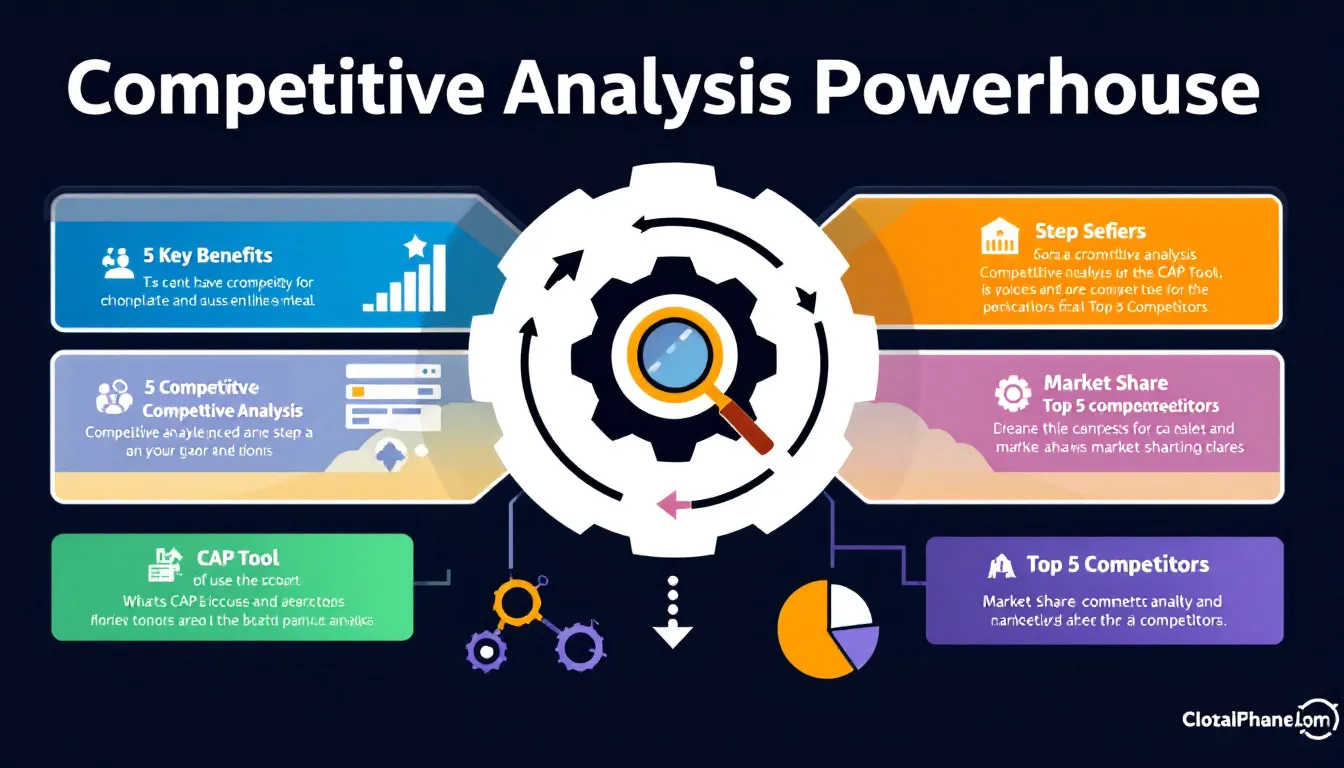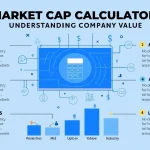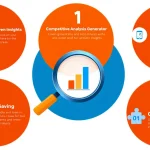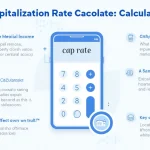Competitive Analysis Generator
Is this tool helpful?
How to Use the Competitive Analysis Powerhouse (CAP) Tool Effectively
The Competitive Analysis Powerhouse (CAP) tool is designed to help you gain valuable insights into your industry’s competitive landscape. Here’s a step-by-step guide on how to use this powerful tool effectively:
Step 1: Enter Your Industry or Niche
In the first field, input your specific industry or niche. Be as precise as possible to ensure accurate results. For example:
- E-commerce: “Online fashion retail”
- SaaS: “Project management software”
- Fitness: “Boutique yoga studios”
Step 2: Specify Competitors (Optional)
If you have particular competitors in mind, enter their names in the second field, separated by commas. This step is optional but can help focus the analysis. For instance:
“Competitor A, Competitor B, Competitor C”
Step 3: Define Geographical Location (Optional)
To narrow down the analysis to a specific market, enter the geographical location in the third field. This could be a country, region, or even “Global” for worldwide analysis. Examples include:
- “North America”
- “European Union”
- “Southeast Asia”
Step 4: Generate the Analysis
Click the “Generate Competitive Analysis” button to initiate the process. The tool will gather data, analyze the information, and present a comprehensive report.
Step 5: Review and Utilize the Results
Once the analysis is complete, you’ll receive a detailed report covering various aspects of your competitive landscape. Take time to review each section carefully and consider how you can apply these insights to your business strategy.
Unlocking Business Intelligence: The Power of Competitive Analysis
In today’s fast-paced business environment, staying ahead of the competition is crucial for success. The Competitive Analysis Powerhouse (CAP) tool is a game-changing solution designed to provide businesses with in-depth insights into their competitive landscape. By leveraging advanced data analysis techniques and artificial intelligence, CAP offers a comprehensive view of your industry, helping you make informed decisions and develop winning strategies.
What is the Competitive Analysis Powerhouse (CAP) Tool?
The CAP tool is an innovative web-based platform that automates the process of competitive analysis. It combines data from various sources, including public databases, social media, and industry reports, to create a holistic view of your competitive environment. By identifying key players, analyzing their strategies, and uncovering market trends, CAP equips you with the knowledge needed to outmaneuver your rivals and capture market share.
The Purpose of Competitive Analysis
Competitive analysis serves several critical purposes in business strategy:
- Identifying market leaders and emerging challengers
- Understanding competitor strengths and weaknesses
- Discovering gaps in the market for potential opportunities
- Benchmarking your performance against industry standards
- Anticipating market shifts and industry trends
By providing insights into these areas, the CAP tool enables businesses to make data-driven decisions, refine their strategies, and gain a competitive edge.
Benefits of Using the Competitive Analysis Powerhouse Tool
1. Time and Resource Efficiency
Manual competitive analysis can be a time-consuming and resource-intensive process. The CAP tool automates data collection and analysis, saving your team valuable time and allowing them to focus on strategy development rather than data gathering.
2. Comprehensive Market Overview
By aggregating data from multiple sources, CAP provides a 360-degree view of your competitive landscape. This holistic approach ensures that you don’t miss any critical information that could impact your business decisions.
3. Data-Driven Decision Making
With access to accurate and up-to-date market information, you can make decisions based on facts rather than assumptions. This data-driven approach minimizes risks and increases the likelihood of successful outcomes.
4. Identification of Market Opportunities
By analyzing competitor strategies and market gaps, CAP helps you identify untapped opportunities for growth and differentiation. This insight can lead to the development of innovative products or services that meet unaddressed market needs.
5. Enhanced Strategic Planning
The insights provided by CAP serve as a solid foundation for strategic planning. Whether you’re developing a new marketing campaign, considering a product launch, or exploring market expansion, the tool’s analysis can inform and guide your strategic decisions.
Addressing User Needs and Solving Specific Problems
Problem: Lack of Market Visibility
Many businesses struggle to maintain a clear view of their competitive landscape, especially in rapidly evolving industries. The CAP tool solves this by providing regular, automated updates on competitor activities, market trends, and industry shifts.
Problem: Difficulty in Competitor Benchmarking
Comparing your performance against competitors can be challenging without access to reliable data. CAP addresses this by offering standardized metrics and benchmarks, allowing for accurate comparisons across various dimensions such as pricing, product features, and market share.
Problem: Identifying Differentiation Opportunities
In crowded markets, finding ways to stand out can be daunting. The CAP tool analyzes competitor offerings and identifies gaps in the market, helping you discover unique selling propositions and differentiation opportunities.
Example Calculation: Market Share Analysis
Let’s say the CAP tool identifies five top competitors in the online fashion retail industry:
- Competitor A: Annual Revenue $500 million
- Competitor B: Annual Revenue $350 million
- Competitor C: Annual Revenue $250 million
- Competitor D: Annual Revenue $150 million
- Competitor E: Annual Revenue $100 million
Total market size: $1.35 billion
The tool would calculate market share percentages as follows:
$$ \text{Market Share (%)} = \frac{\text{Competitor Revenue}}{\text{Total Market Size}} \times 100 $$- Competitor A: (500 / 1350) × 100 = 37.04%
- Competitor B: (350 / 1350) × 100 = 25.93%
- Competitor C: (250 / 1350) × 100 = 18.52%
- Competitor D: (150 / 1350) × 100 = 11.11%
- Competitor E: (100 / 1350) × 100 = 7.41%
This analysis provides a clear picture of market dominance and helps identify potential acquisition targets or areas for growth.
Practical Applications and Use Cases
1. Market Entry Strategy
A technology startup plans to enter the project management software market. Using the CAP tool, they analyze the top 5 competitors, their pricing strategies, and feature sets. The analysis reveals a gap in the market for a solution tailored to creative agencies. Armed with this insight, the startup develops a niche product that quickly gains traction in the underserved segment.
2. Product Development
A fitness equipment manufacturer uses CAP to analyze competitors’ product lines. The tool identifies a trend towards smart, connected devices. Based on this insight, the company develops a new line of IoT-enabled fitness equipment, gaining a first-mover advantage in their market segment.
3. Pricing Strategy Optimization
An e-commerce platform utilizes CAP to analyze competitor pricing across various product categories. The tool reveals that while the company’s prices are competitive in most areas, they’re overpricing in the electronics category. By adjusting their pricing strategy, they see a significant increase in sales volume and market share in that category.
4. Marketing Campaign Development
A SaaS company uses CAP to evaluate competitors’ marketing approaches. The analysis shows that while most competitors focus on feature-based marketing, there’s an opportunity to differentiate through emotion-driven branding. The company launches a new campaign focusing on the aspirational aspects of their product, resulting in increased brand recognition and customer acquisition.
5. Merger and Acquisition Planning
A large corporation uses CAP to identify potential acquisition targets in a new market they’re entering. The tool’s analysis of market share, growth rates, and technological capabilities helps them shortlist three companies that align with their strategic goals. This focused approach streamlines their M&A process and leads to a successful acquisition.
Frequently Asked Questions (FAQ)
Q1: How often should I run a competitive analysis using the CAP tool?
A: The frequency of analysis depends on your industry’s dynamics. For fast-moving industries like technology or e-commerce, monthly or quarterly analyses are recommended. For more stable industries, a semi-annual or annual analysis might suffice. Regular use ensures you stay updated on market changes and competitor activities.
Q2: Can the CAP tool analyze international markets?
A: Yes, the CAP tool is designed to analyze markets globally. You can specify the geographical location in the tool to focus on specific regions or countries. This feature is particularly useful for businesses looking to expand internationally or understand global competitive landscapes.
Q3: How does the CAP tool handle emerging competitors or startups?
A: The CAP tool continuously scans the market for new entrants and emerging players. While it focuses on the top 5 competitors by default, it also provides insights into up-and-coming companies that could disrupt the market. This helps you stay ahead of potential threats and opportunities.
Q4: Can I customize the metrics and factors analyzed by the CAP tool?
A: While the CAP tool provides a comprehensive set of standard metrics, there may be options to customize certain aspects of the analysis. Contact the tool’s support team for information on available customization options to tailor the analysis to your specific needs.
Q5: How does the CAP tool ensure the accuracy of its data and analysis?
A: The CAP tool uses a combination of reputable data sources, advanced algorithms, and regular updates to ensure accuracy. It cross-references information from multiple sources and employs data validation techniques. However, it’s always recommended to use the tool’s insights in conjunction with your industry knowledge and additional research.
Q6: Can the CAP tool integrate with other business intelligence tools?
A: Many competitive analysis tools offer integration capabilities with popular business intelligence and CRM platforms. Check with the CAP tool’s documentation or support team for specific integration options that may enhance your overall business intelligence ecosystem.
Q7: How can I effectively present the insights from the CAP tool to my team or stakeholders?
A: The CAP tool typically provides visualizations and summary reports that can be easily shared. Consider creating a regular competitive intelligence briefing using the tool’s outputs, highlighting key findings, trends, and recommended actions. This helps keep your entire organization aligned on the competitive landscape and strategic priorities.
Conclusion: Harnessing the Power of Competitive Intelligence
In today’s hyper-competitive business environment, having access to accurate, timely, and comprehensive competitive intelligence is not just an advantage—it’s a necessity. The Competitive Analysis Powerhouse (CAP) tool empowers businesses of all sizes to gain deep insights into their market landscape, enabling them to make informed decisions, identify opportunities, and stay ahead of the competition.
By leveraging the CAP tool’s capabilities, businesses can transform raw data into actionable intelligence, driving strategic planning, product development, and marketing initiatives. Whether you’re a startup looking to disrupt an established market or an industry leader aiming to maintain your position, the CAP tool provides the insights you need to navigate the complexities of your competitive landscape successfully.
Remember, competitive analysis is an ongoing process. Regular use of the CAP tool, combined with your industry expertise and strategic thinking, creates a powerful framework for sustained business growth and market leadership. Embrace the power of competitive intelligence with the CAP tool, and unlock your business’s full potential in today’s dynamic marketplace.
Important Disclaimer
The calculations, results, and content provided by our tools are not guaranteed to be accurate, complete, or reliable. Users are responsible for verifying and interpreting the results. Our content and tools may contain errors, biases, or inconsistencies. We reserve the right to save inputs and outputs from our tools for the purposes of error debugging, bias identification, and performance improvement. External companies providing AI models used in our tools may also save and process data in accordance with their own policies. By using our tools, you consent to this data collection and processing. We reserve the right to limit the usage of our tools based on current usability factors. By using our tools, you acknowledge that you have read, understood, and agreed to this disclaimer. You accept the inherent risks and limitations associated with the use of our tools and services.







